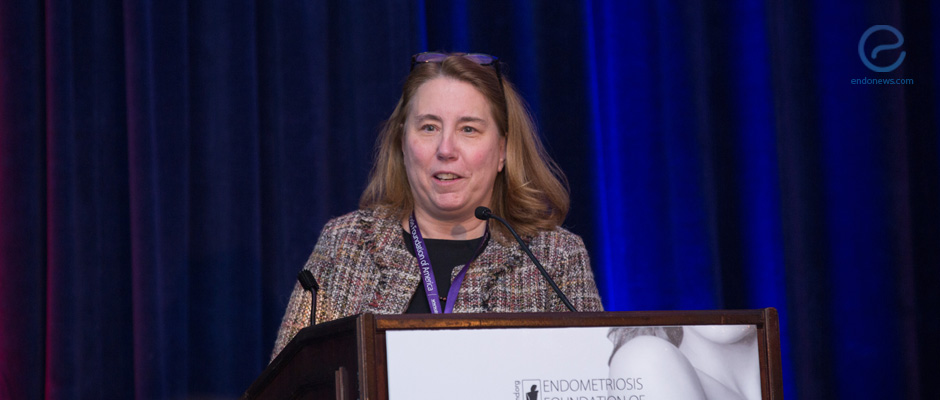EFA Medical Conference 2017: "NIH Funding - Present and Future" Presentation by Dr. Lisa Halvorson
Nov 22, 2017
Dr. Lisa Halvorson discusses the history and organization of the NIH while highlighting key sources of funding for research projects.
Key Points
Highlights:
- Dr. Lisa Halvorson, the Chief at the Gynecologic Health and Disease Branch at the National Institute of Health (NIH)/NICHD/HHS, gives a presentation at the EFA 2017 Medical Conference that delves into the history and organization of the NIH, grants and other sources of funding for research project, and ways to raise awareness and interest in endometriosis research.
Importance:
- Research funding is fundamental to the development and completion of research projects that seek to understand better and cure endometriosis.
Key points:
- 27 institutes and centers within the NIH, the following are especially pertinent to this conference:
- Office of Research and Women’s Health: This center does have an NIH budget; however, they are unable to make or fund grants.
- Eunice Kennedy Shriver National Institute of Child Health and Human Development (NICHD) is the primary source of funding for endometriosis research: A Gynecologic Health and Disease Branch was created that focuses on conditions like endometriosis.
- National Cancer Institute: Made up of 30 divisions
- National Institute of Environmental Health Sciences (NIEHS) is essential as the environment and lifestyle choices can impact the progression of endometriosis as well as ovarian and breast cancer.
- National Human Genome Research Institute
- Dr. Halvorson discusses changes in NIH funding over the past 20 years.
- There is a mismatch regarding funding for some diseases, like endometriosis, and the prevalence of these disorders in society. Dr. Halvorson believes that endometriosis funding should be higher than it is when compared to other diseases. She suggests that better advocacy could lead to increased funding.
- Dr. Halvorson discusses grant applications that are coming out in the next year:
- Small Business Innovation Research Grants
- Looking at the role of stem cells in the pathogenesis or treatment of gynecological disorders.
- Another program allows researchers to focus solely on benign gynecologic conditions.
- Other agencies that could be sources of funding outside the NIH including EFA, United States Department of Veterans Affairs, institutional financing, and industry funding.
- Ways to build interest:
- Symposiums like the EFA Medical Conferences that have large, diverse audiences.
- Crosstalk between different advocacy groups
- Calling the program officer at the NIH
Lay Summary
Dr. Lisa Halvorson, the Chief at the Gynecologic Health and Disease Branch at the National Institute of Health (NIH)/NICHD/HHS, gave a presentation titled “NIH Funding - Present and Future” at the EFA 2107 Medical conference.
Dr. Halvorson’s presentation began with a brief summary of the organization of the National Institute of Health (NIH). Dr. Halvorson highlighted a few centers that she thought would be of interest to conference participants. One of these centers is the Eunice Kennedy Shriver National Institute of Child Health and Human Development (NICHD) and Dr. Halvorson spends part of the presentation delineating the history and organization of the aforementioned center. Dr. Halvorson also spends some time discussing where endometriosis research is concentrated within the NIH and its various centers.
Over the course of the presentation, Dr. Halvorson talks about NIH funding over the past 20 years. She then compares the funding for different diseases and talks about the disparity between breast cancer funding and endometriosis funding. She believes that congressional funding for endometriosis can be raised if advocacy for the illness is improved. At the very end of her presentation, Dr. Halvorson also presents different methods for garnering interest in and support for the disease. She truly stresses the importance of cross-disciplinary collaboration.
Dr. Halvorson then delves into the applications for funding that will be available in the fall and the spring. She briefly discusses the areas of interest for each of these grants. Dr. Halvorson also talks about other sources of funding outside of the NIH.
Dr. Halvorson’s presentation can be found at the following URL: https://www.endofound.org/video/nih-funding-present-and-future-lisa-halvorson-md-facog/1558.
Dr. Lisa Halvorson NIH NICHD HHS NCI NIEHS grants funding mc2017

